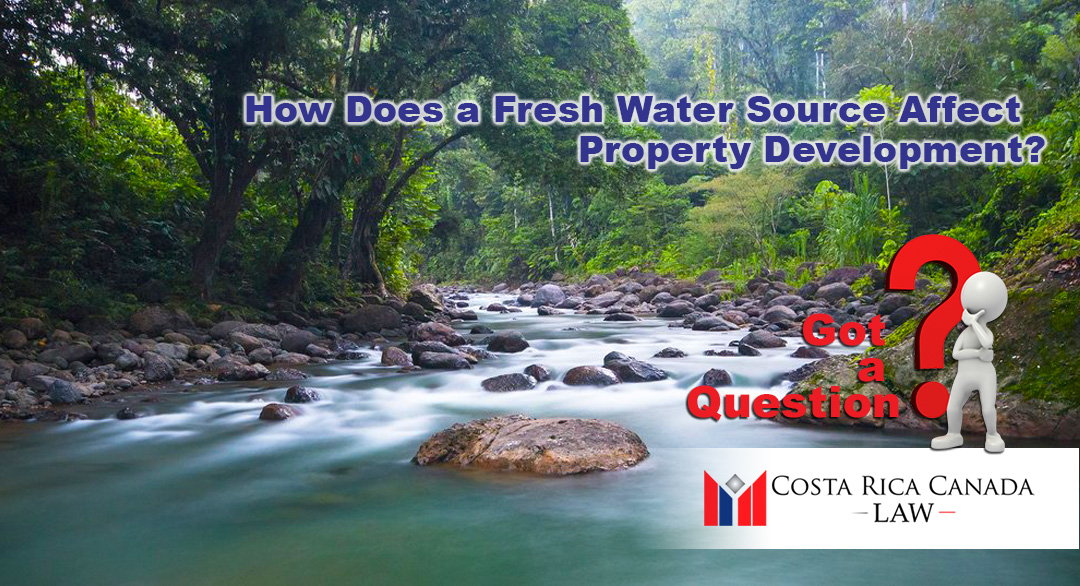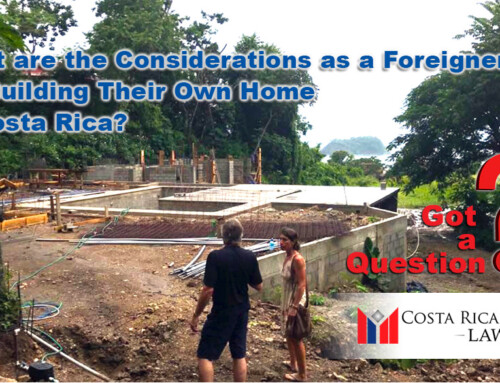In Costa Rica, all naturally occurring sources of fresh water are the property of the State. The regulation of use and distribution of fresh water is controlled entirely by the State, through the State Water and Sewer Regulator (AyA), a Community Water and Sewer Association (ASADA), which is under the supervision of AyA, or a privately dug and registered well with the State Water Well Registry (SENARA). The Environment Ministry (MINAE), also plays a major part in the environmental regulation and protection of fresh water sources.
The Impact of Forestry Law #7575, Article 33 on Development Properties
When purchasing a property in a completed residential development, any issues concerning the provision of potable water or other water-related issues will have been dealt with during the permitting of the development by the Municipality where the development is located, or by other Government Agencies involved in the development approval process.
However, vacant land, and in particular, a larger parcel of vacant land located in a more rural part of the country, which is being considered for development for commercial or residential purposes, presents a specific due diligence challenge. This challenge includes the determination of the presence of fresh water sources in the form of springs (nacientes), lakes, or rivers, located on or adjacent to the property.
The Registered Survey Plan for the property may contain a notation, stating that the property is affected by the Forestry Law #7575, Article 33 (Ley Forestal 7575 Art. 33). This Law provides for the environmental protection areas required to be adhered to for developing properties where rivers, lakes, or spring sources are located on or adjacent to the property under consideration for development. It is unlikely that any annotation will appear on the registered Property Title in the National Registry, that the property is subject to these protection area restrictions, where development is prohibited.
The Protection Areas
The following is a translation of the applicable Article 33 of the Forestry Law providing for these protection areas:
“ARTICLE 33.- Protection Areas
The following protection areas are declared:
a) The areas bordering permanent springs, defined in a radius of one hundred meters measured horizontally.
b) A strip of fifteen meters in rural areas and ten meters in urban areas, measured horizontally on both sides, on the banks of rivers, ravines or streams, if the terrain is flat, and fifty meters horizontally, if the ground is broken.
c) A zone of fifty meters measured horizontally in the shorelines of lakes and natural reservoirs and in lakes or artificial reservoirs built by the State and its institutions. Private artificial lakes and reservoirs are exempt from the protection area requirement.”
My Opinion
My advice is, when considering the purchase of any property for development, to have a qualified Real Estate Lawyer check the registered Property Title and the registered Survey Plan, to determine if any annotation exists with respect to the Forestry Law protection area restrictions. The registered Survey Plan should be current within the last five years. Should an annotation of the protection area restrictions exist, a Property Surveyor should be hired to prepare a map of the property, indicating the presence of any protection areas affecting the property’s development.






